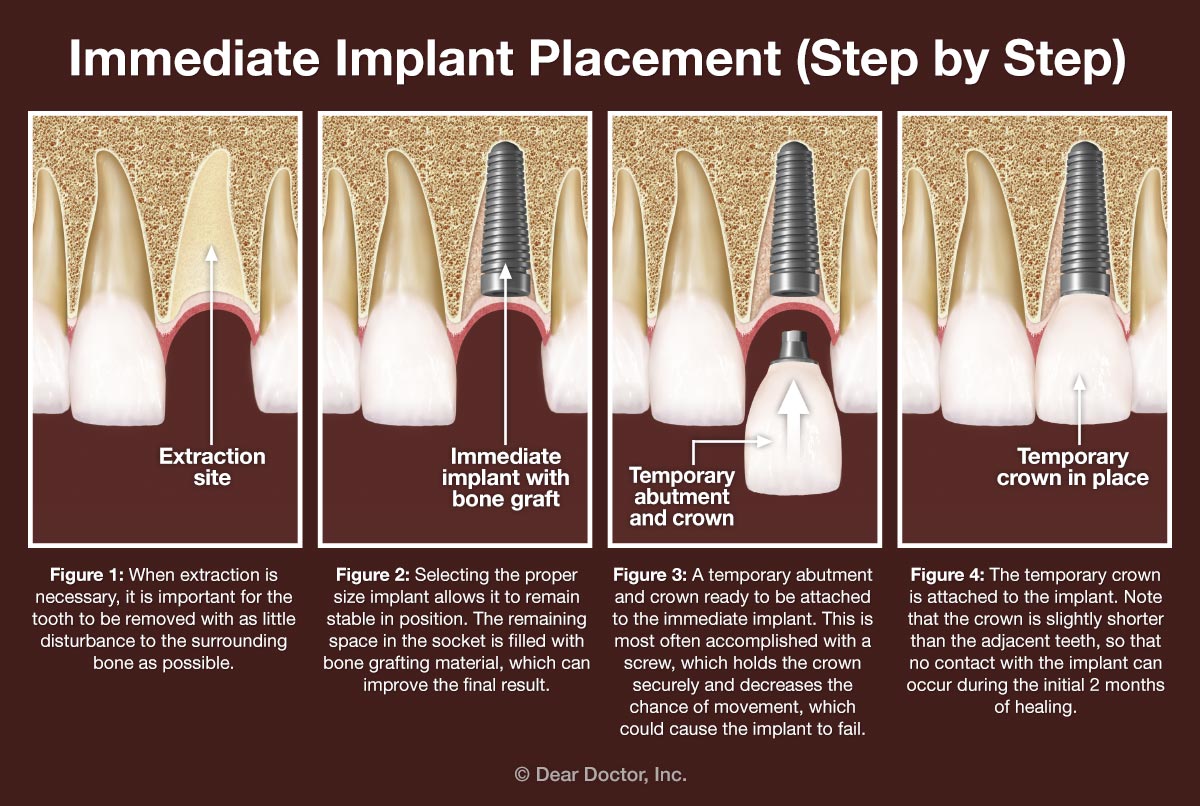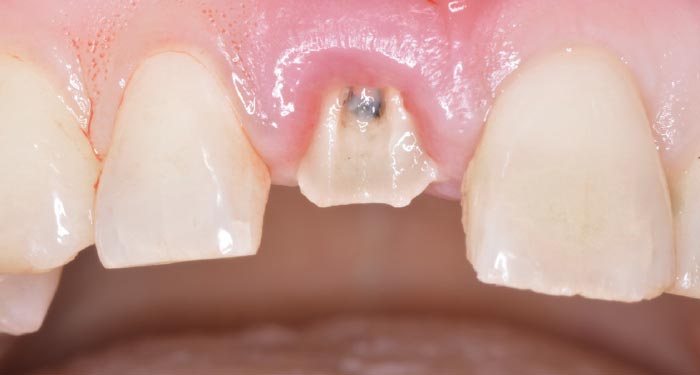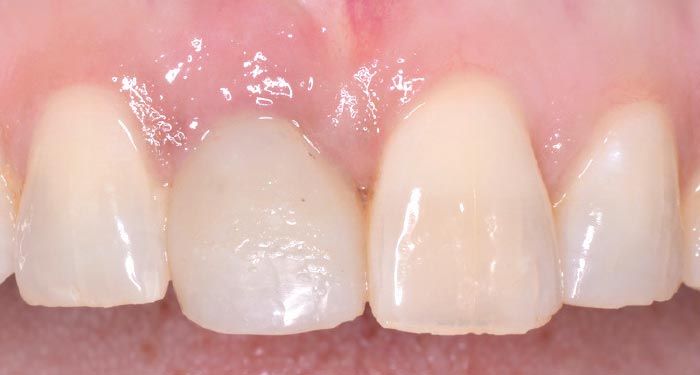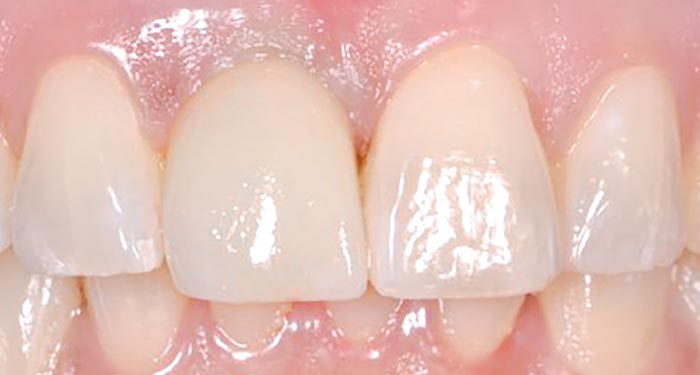Immediate Dental Implants
How Rebuilding Gum and Bone Tissue Can Help Ensure Successful Treatment
 |
Dental implants, hailed decades ago as a cutting-edge technological breakthrough, are recognized today as the premier method for replacing missing teeth. Their use has become so routine that an estimated 2,000 are placed every weekday in the U.S. alone. Researchers have a good understanding of how the screw-shaped titanium implants become integrated with a person's own bone cells, and dentists and patients alike appreciate the solid anchorage they provide for lifelike replacement teeth and bridges. Implants can also be used to hold dentures in place, and for some orthodontic treatments.
But the implant that makes the biggest difference in someone's life may be the one that's placed right up front. Replacing a missing or deteriorated tooth in the center of a smile can have a dramatic impact not only on a person's appearance, but also on their self-esteem and overall quality of life.
A great deal of artistry goes into ensuring that a prosthetic tooth looks natural… and beautiful. Making sure replacement teeth are exactly the right size, shape and shade is very important. Yet, like a painting, the artistry isn't shown at its best unless it is aesthetically framed — in this case, with healthy, pink gum tissue that covers the tooth's roots and lines up evenly with the rest of your smile.
Achieving the perfect balance of long-lasting strength, attractive appearance, and gum tissue health is the challenge that implant dentists face regularly — and meeting that challenge takes a good deal of skill and planning. Here are some of the factors that your dental surgeon considers when placing a dental implant in a highly visible area.
Immediate or Delayed Implants
There are several stages in the implant process: exactly how many depends on the individual situation. First, if hopelessly decayed or damaged teeth are present in the mouth, they will need to be extracted (removed) before implants can be placed. Extraction, however, isn't the forceful process you may imagine: In fact, it's generally performed under local anesthesia, and is accomplished by gently manipulating the tooth until it becomes loose enough to remove.
 |
| Immediate Implant Placement (Step by Step)
Click to enlarge |
When extraction is performed before implant placement, the goal is to remove the tooth with as little disturbance to the bony socket or surrounding gum tissue as possible (figure 1). If done successfully, it is often possible for the implant itself — a small, threaded screw shaped post, the size of a tooth's root — to be placed in the socket immediately after extraction (figure 2). Immediate implant placement can be desirable for several reasons: It means less overall treatment time and it leads to a quicker result for the patient.
Immediate implant placement can be desirable for several reasons: It means less overall treatment time and it leads to a quicker result.
Traditionally, a newly placed implant is allowed to remain undisturbed for several weeks without any further treatment. The waiting period gives the process of osseointegration ("osseo" – bone; "integration" – fusion with) time to get started. However, in some cases it's now possible to move right to the next stage: receiving a temporary crown (replacement tooth) the same day as extraction and implant placement (figures 3 and 4).
Should You Consider Immediate Tooth Replacement?
The benefits of having an immediate single tooth replacement are clear: You won't have to wear a removable prosthesis to hide the gap in your smile, and your treatment will require the least number of office visits. The temporary crown you initially get, however, won't be permanent — it is made slightly less than full size, so it won't come into contact with other teeth when you bite and risk disturbing the developing connection between implant and bone. You'll still have to avoid chewing in the area, and you will need to have a permanent crown placed at a later date. Yet the temporary tooth will be hard to tell apart from your natural, healthy teeth.
 |
| Figure 5: This front tooth has a fracture that goes below the gum line to the crest of bone. This tooth cannot be restored and must be removed. |
 |
| Figure 6: A temporary crown is placed after extraction. This crown is reduced in size, to prevent contact during jaw movement and to protect the implant during healing. |
 |
| Figure 7: The final crown is in place. Notice that the gum line looks the same as the adjacent tooth, and the implant crown looks very natural. |
However, there's a potential downside to immediate tooth replacement: Placing too much stress on an implant that hasn't yet completely fused with the underlying bone could cause the treatment to fail. The good news is that this happens rarely. In the right circumstances, research shows that the success rate of this procedure is very similar to that of delayed crown placement.
Which type of treatment is best for you? Your implant team (which often involves your dentist, the periodontist or oral surgeon and dental laboratory technician) will have specific recommendations based on your individual situation. In general, people who have thinner gum or bone tissue (whether due to genetic factors or resulting from a medical condition) may be better advised to consider a multi-step approach. The same is true for those who already have an asymmetric gingival (gum) display — that is, a gum line that appears uneven across the smile. It's also recommended for anyone who would have trouble eating softer foods for a period of time, or complying with instructions for post-surgical care.
But when none of those things apply, immediate tooth replacement with long-term stability is a viable option — particularly when extraction is performed with minimal trauma; when diagnostic imagery shows that minimally invasive implant placement is possible; and when your implant specialist uses specific techniques to preserve healthy gum and bone tissue.





